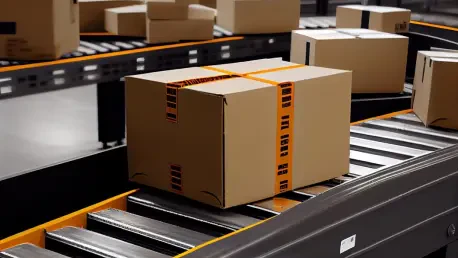I’m thrilled to sit down with Rohit Laila, a seasoned expert in the logistics industry with decades of experience in supply chain management and delivery operations. Rohit’s passion for technology and innovation in this field makes him the perfect person to shed light on the U.S. Postal Service’s recent advancements in package sorting technology. Today, we’ll dive into the details of these cutting-edge machines, their impact on efficiency and workers, and how they fit into the broader vision for modernizing postal operations.
How do the new package sorting machines introduced by the U.S. Postal Service aim to transform their operations?
These new machines, like the Parallel Induction Linear Sorter (PILS) and the Matrix East/West Sorter (MEWS), are game-changers for the Postal Service. They’re designed to boost processing capacity and cut down on operating costs. The older equipment just can’t keep up with today’s package volumes, especially with e-commerce booming. These next-gen sorters handle thousands of packages per hour, allowing the Postal Service to retire outdated systems and streamline their workflow significantly.
What can you tell us about the testing of the PILS machine in Dulles, Virginia, and why that location was selected?
The PILS machine was tested at the Dulles processing and distribution center near Washington, D.C., primarily because of the high volume of packages that flow through there. It’s a real stress test environment, ideal for seeing how the machine performs under pressure. In just 10 months, it processed 12 million packages, which shows its potential. Dulles also allowed engineers to build and integrate the system from scratch in under seven months, proving that deployment can be swift even in busy hubs.
Can you break down how the PILS machine operates and what makes its technology stand out?
Absolutely. The PILS machine automates a lot of the heavy lifting. It starts by picking up containers of parcels and unloading them onto a conveyor belt. From there, the packages are fed into a system where a six-sided camera setup reads addresses from all angles. This tech ensures accuracy in sorting, even with oddly shaped or poorly labeled packages. At 7,000 packages per hour, it’s twice as fast as the older single induction sorters, which is a massive leap forward.
Shifting to the MEWS system in Avondale, Arizona, what makes its capacity and design so impressive?
The MEWS system is a beast. It can process up to 50,000 packages per hour, translating to over 1 million daily. That’s double the capacity of the Avondale facility before its installation and a 75% jump in efficiency. Its design—spanning nearly three football fields—allows for multiple induction lines and high-throughput components. It’s tailored for regional hubs with fewer destination separations, making it a perfect fit for a place like Avondale, which routes to about 15 key locations.
How does the MEWS system tie into the Postal Service’s long-term strategy for modernization?
The MEWS is a cornerstone of the Postal Service’s 10-year transformation plan, backed by a whopping $40 billion investment. This plan focuses on upgrading facilities, speeding up delivery, and enhancing service reliability to stay competitive with giants like FedEx, UPS, and Amazon. The MEWS, with its speed and scale, saves critical time in processing, which directly translates to faster deliveries and better customer satisfaction. It’s a bold step toward modernizing an aging infrastructure.
Can you walk us through the sorting process with the MEWS system and the role employees play in it?
Sure. It starts with bins of packages being dumped onto conveyor belts. Employees use long sticks to spread them out evenly so there’s no clogging. The packages then move up through this multilevel machine, getting scanned along the way. The system sorts them based on destination, sending them down chutes into bins for places like Los Angeles or Las Vegas. From there, they’re loaded onto trucks for delivery. Employees are still key, but their role is less labor-intensive thanks to the automation.
What kind of impact do these new sorting machines have on Postal Service workers compared to older methods?
These machines are a huge relief for workers. Manual sorting is physically taxing—lifting heavy packages, repetitive motions, and long hours on your feet. The PILS and MEWS systems take over most of that grunt work, reducing strain and the risk of injury. They’re also safer, with fewer chances for accidents compared to handling everything by hand. It allows workers to focus on oversight and finer tasks, which is a big quality-of-life improvement.
What is your forecast for the future of automation in postal and logistics operations?
I see automation becoming even more central to postal and logistics operations in the coming years. With package volumes only increasing due to online shopping, systems like PILS and MEWS are just the beginning. I expect advancements in AI and robotics to further refine sorting precision and speed, potentially integrating predictive analytics to optimize routing before packages even hit the conveyor. The challenge will be balancing tech investment with workforce needs, but the trend is clear—automation will drive efficiency and competitiveness in this space.









